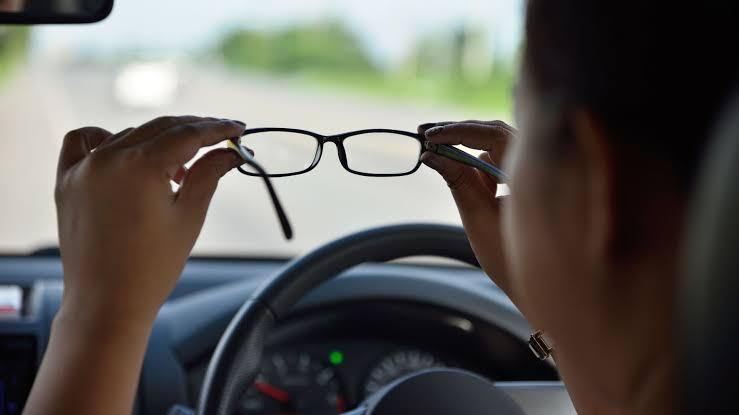
Commuting is a very essential part of daily living. Amongst all known means of transportation, transportation by land (road ravel) remains the most commonly used.
The term “road users” simply refers to all those who move on the roads. They include: motorists, pedestrians, cyclists. In a broader sense, it includes all those who are found on the roads including hawkers, traffic warders, wheelbarrow pushers and vendors.
Road accidents account for over 1.2 million of deaths that occur every year globally; and poor vision accounts for some of the various known possible causes of road accidents (World Health Organization, 2017). Defective vision and mental health status alter your perception of road traffic communication cues which are: light, movement and sound, and lead to errors which may be fatal. The eye is the sense organ we use for sight. The art of seeing is called ‘vision’. It is very important if we must perceive and appreciate light, colour, signs and signals, forms and shapes, judge distances between objects, perspectives and so on.
Importance of good vision for road users:
- It enables road users identify traffic signs early enough.
- It also helps road users appreciate relative distance between objects.
- To make timely decisions.
- To appreciate signs being given off by other road users.
- To judge speed better.
- To avoid obstacles, and also judge the depth of potholes.
- Road users can be able to identify warning signs on their dashboards.

Aspects Of Vision That Must Be in Order to Ensure Safety on The Road
Visual Acuity (VA): This is a basic eye test done to evaluate how well you can see objects clearly at different distances. It basically assesses how well you can be able to recognize objects and see details distinctively. It is done for far vision, at a distance of 6m (20ft), and for near vision (usually about 28-40cm). A VA of 6/6 (m) or 20/20 (ft) is regarded as optimal and 6/12, 6/60, 5/60 and so on as poor. A person with a VA of 3/60 or worse after correction is referred to as being “legally blind”, and such a person must not be found driving.
Refractive Status: Comprehensive eye test results will reveal if you are long-sighted, short-sighted, astigmatic or otherwise and if you will be needing corrective lenses. Refractive errors such as these are usually corrected to the best possible visual acuity. Your optometrist should help you determine if spectacles or contact lenses will be ideal for you. Wearing your correction offers better visual performance.
Colour Vision: Colour attracts attention and road traffic engineering is important for making informed decisions. Defective colour vision may affect the responsiveness of drivers to signal lights. Having ‘colour vision deficiency’ implies that you are not able to see certain colours the way normal people see them while being ‘colour blind’ implies not being able to see certain colours at all.
Types of colour vision defect include; red-green colour deficiency/blindness, blue-yellow colour deficiency/blindness and monochromacy (complete colour blindness). Colour vision deficiency usually runs in families and has no real treatment but special visual aids including glasses and contact lenses can help improve ability to discriminate between colours.
Visual Field: Your visual field is how wide of an area your eye can see when focused on a central point. How functional your visual field is, determines to a large extent if you will be able to notice overtaking vehicles, road signs and also signals on your dashboard while trying to maintain focus on the road. Your Optometrist determines your visual field using special equipment called a perimeter.
Presbyopia: Quite a number of persons do not know that their ability to read prints and see clearly at close range keeps diminishing with age. This condition is called presbyopia. It also makes it difficult for drivers to see their dashboards clearly and also uses their maps effectively while driving. When checking refractive status in the clinic, your doctor also assesses your eye for presbyopia and prescribes corrective lenses accordingly. Early presbyopia starts at about age 35 years, while most other people begin to experience these changes from about age 40yrs.
In conclusion dear reader, to preserve the eyes and their benefits, my professional advice is to always go for a regular eye examination at least once every year, consult and ask your Optometrist questions concerning your eyes and the general physician once you notice any changes in your health condition as these health conditions can be properly managed when detected early enough, do not self-medicate and do not die in silence.
